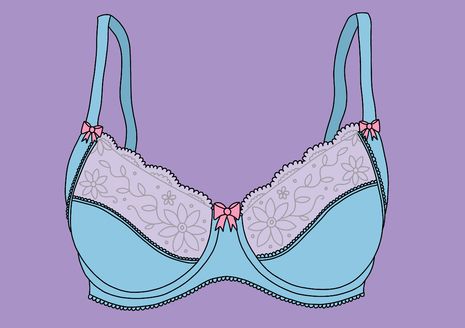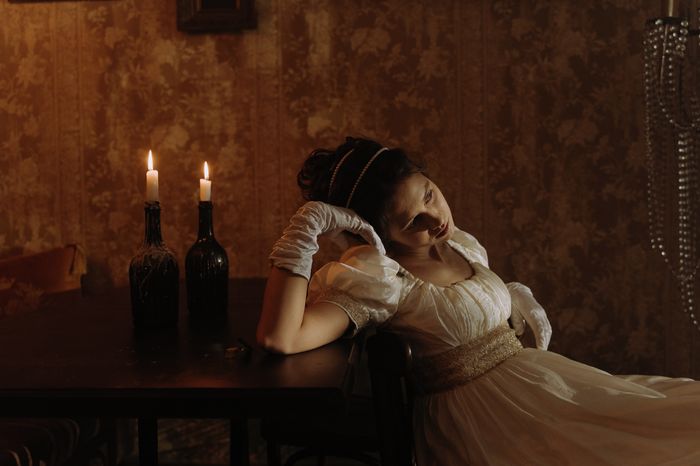Should you burn your bra?
Is the bra an underwired symbol of the patriarchy that we could do without?
“Bras: A Symbol of the Patriarchy” — Natasha Sauvage

Bras. Breast friends. Titty cages. Multiple studies have been conducted on whether women should wear bras or not. Many of them conclude “yes” or “no”, depending on which option leads to more sagging. In other words, male researchers make conclusions about whether wearing bras is good or not based on how visually appealing they find the end result. I’m sure one can see how the use of sagging as a metric points to the patriarchal ideals that the studies are rooted in.
It is an extra cost we are expected to incur as women (and if you’re any bigger than a double D, good luck finding a cheap bra that does the job and doesn’t look like a 1950s tablecloth!). Looking at the wider picture, we incur not only a financial cost but a physical one: these same studies speculate that bras can actually weaken our breast tissue. In the sea of things that women are influenced to do with their bodies that ultimately lead to harm — restricting their breathing with corsets and undergoing harmful surgeries — bras are just another addition to the list, which all comes together to create a system in which the trends around women’s bodies are designed to weaken them, therefore increasing their dependence and reliance on men.
“It enables men to sexualise every facet of our existence: even down to the bras we wear”
We’ve probably all seen men’s nipples poking out from their shirts before. Given how the male body is typically viewed as ‘neutral’, this is rarely critiqued. If this was a woman, however, there is immediately a sexual connotation attached to her body. She isn’t wearing a bra, which acts as an invitation to picture her naked. Her nipples are protruding? She is obviously a siren, a temptress, a whore. The overt sexualisation of the female form means that women become scared to let their nipples show lest they become the next target of perverted, porn-addled men who have never touched a woman in their lives. It would explain the popularity of pasties, designed explicitly to hide the outline of nipples. It would explain the padding in bras. It would explain why bras in themselves are viewed as inherently sexual. The purpose of bras is to create an air of mystery, titillation even, around women’s breasts, and it enables men to sexualise every facet of our existence: even down to the bras we wear.
Burn your bra. It’s not doing you any good.
“Going braless isn’t (always) the liberation it claims to be” — Eden Keily-Thurstain
Does going braless represent freedom from the shackles of social convention and uncomfortable underwires? Not for me, sorry.
The humble bra and I have had an interesting relationship over the years. As an early bloomer, my preliminary relationship with bras involved several somewhat traumatic trips to M&S, wondering what was wrong with me. For a long time, the bra was a symbol of getting older; it represented the idea of a womanhood that I was oh so desperate to stave off. However, many years and many bras later, I certainly have a more positive, if not nuanced relationship with the controversial piece of lingerie.
“We need to look more closely at what our vision of the liberated, braless woman looks like”
It’s a sad fact that I will not be able to do any form of braless exercise without it being deeply uncomfortable. The bra is my ticket to freedom, to run or cycle wherever I choose. Even if I’m not formally “exercising”, having the option to be able to run for the bus is certainly a nice one. Regardless of whether I wear a bra or not, I am still subject to the suckier parts of the patriarchy, risking getting catcalled for the crime of existing in a public place. So why would I not just do what makes me most comfortable? Personally, bras are a matter of practicality; they are not sexy, nor are they activism. Regardless of how society chooses to view me, wearing a bra is a choice I will continue to make daily.
However, I am all too aware of the fact that I don’t have much control over how bras are perceived. There is a tiny element of feminist guilt in being a bra wearer, a notion that if I could only free myself from the hungry jaws of the patriarchy then I will be a better woman, a more liberated one. But I can’t shake the fact that, despite a few notable exceptions (such as Natasha above), the discourse around going braless is predominantly from rich, white, cis-women who are rarely above a C-cup. Don’t get me wrong, I think it’s great that people feel increasingly free to go without something they hate. But I think we need to look more closely at what our vision of the liberated, braless woman looks like. I can’t escape what the bra represents for many, but it doesn’t have to be its sole meaning. In fact, I refuse to let it be.
 News / Cambridge students set up encampment calling for Israel divestment6 May 2024
News / Cambridge students set up encampment calling for Israel divestment6 May 2024 News / Cambridge postgrad re-elected as City councillor4 May 2024
News / Cambridge postgrad re-elected as City councillor4 May 2024 News / Proposed changes to Cambridge exam resits remain stricter than most7 May 2024
News / Proposed changes to Cambridge exam resits remain stricter than most7 May 2024 News / Some supervisors’ effective pay rate £3 below living wage, new report finds5 May 2024
News / Some supervisors’ effective pay rate £3 below living wage, new report finds5 May 2024 Fashion / Class and closeted identities: how do fits fit into our cultures?6 May 2024
Fashion / Class and closeted identities: how do fits fit into our cultures?6 May 2024






